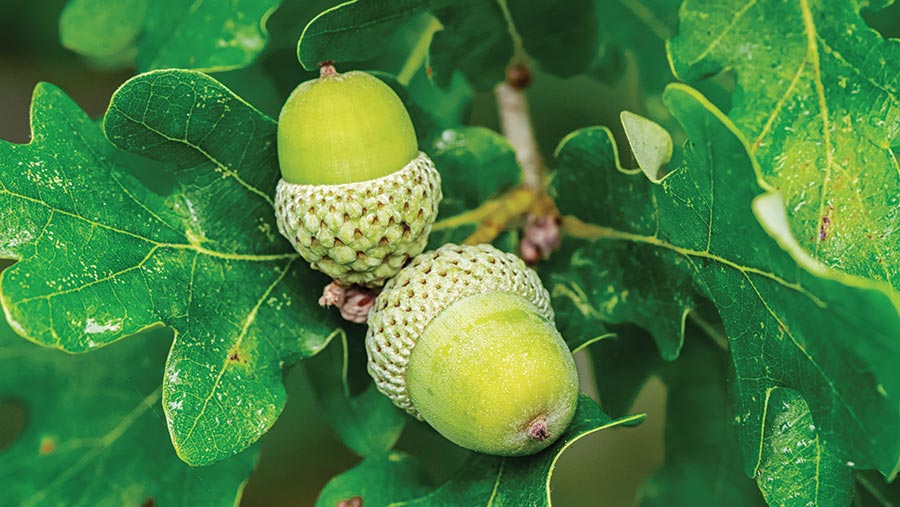Acorn poisoning in livestock: Symptoms, treatment and prevention
 © stefanholm/Adobe Stock
© stefanholm/Adobe Stock Last autumn saw an increase in cattle and sheep deaths with either confirmed or suspected acorn poisoning. This was because 2022 was considered a “mast year” for oak trees.
A mast year usually occurs once every five to 10 years, when a tree species such as oak drastically increases the amount of fruit it produces.
Usually, oak trees put so much energy into this bumper crop of acorns that they have little energy to continue producing for the following couple of years.
However, the increasingly hot weather during spring and summer gives a longer (but drier) growing season and, therefore, more abundant crops.
More regular mast years could make acorn poisoning a more prevalent threat.
About the author

Hotter springs and summers may yield more frequent bumper acorn crops, increasing the risk of livestock poisoning.
Amelia Briggs of Bishopton Veterinary Group offers expert advice.
Another consequence of drier, hotter conditions is shorter grazing pastures and scarcer forage, meaning livestock will be more likely to search out alternative food sources.
The branches, leaves and acorns of oak trees produce a bittersweet taste, making them palatable to livestock.
Acorns and oak leaves contain phenols and tannins that are toxic when ingested in sufficient quantities.
Young leaves are more toxic than mature ones, although poisoning will occur most commonly when large quantities of green, ripe acorns are consumed when they begin to drop from the oak trees.
There appear to be fewer problems with acorn poisoning after a few hard frosts.
Since freezing does not decrease the level of tannins found in acorns, the reduction in problems is more likely caused by the lower palatability of acorns after weathering has occurred.
Clinical signs
The earliest signs of acorn poisoning are related to gastrointestinal dysfunction. Constipation and associated straining rapidly progress to diarrhoea (often black or bloody in colour).
Abdominal pain, bloat and poor appetite also are seen.
As the disease progresses, signs of kidney failure can be seen. At this stage, affected cattle may show dehydration (a dry, crusty muzzle and rough hair coat), increased thirst, jaundice, and general weakness.
Other signs include: weight loss, frequent urination, and a rapid, weak pulse.
Oedema (swelling caused by fluid that has settled out into tissue) may be seen in the lower parts of the body such as the legs, chest and ventral abdomen.
Acutely affected animals usually die within 24 to 72 hours. Animals that survive beyond this will lose weight and become chronically ill.
Treatment
Farmers suspecting acorn poisoning in their stock should remove the animals from the source, give them plenty of water and contact a vet immediately.
There is no specific antidote for acorn poisoning and success of symptomatic treatment depends on the severity of symptoms and quantities of toxins consumed.
Activated charcoal can be used to help with absorbing the toxins. Oral fluids, possibly with a laxative, can offset the effects of dehydration and aid constipation.
Antibiotics are usually given to cover for secondary infection.
With these limited treatment options, emphasis should be placed on prevention.
Prevention
The best practice for the preventing acorn poisoning is to keep sheep and cattle away from acorns.
Fencing off, or avoiding grazing, areas where oaks are prevalent is the best way to prevent exposure. Particular vigilance after autumn storms is beneficial where large quantities of ripe acorns will be on the ground.
If it is not possible to avoid areas near oak trees, providing cattle with additional palatable food sources will make them less likely to search for acorns while grazing short pasture.
A discussion about the plant and tree species on your farm to prevent poisoning incidents could form an interesting part of your annual health plan.
